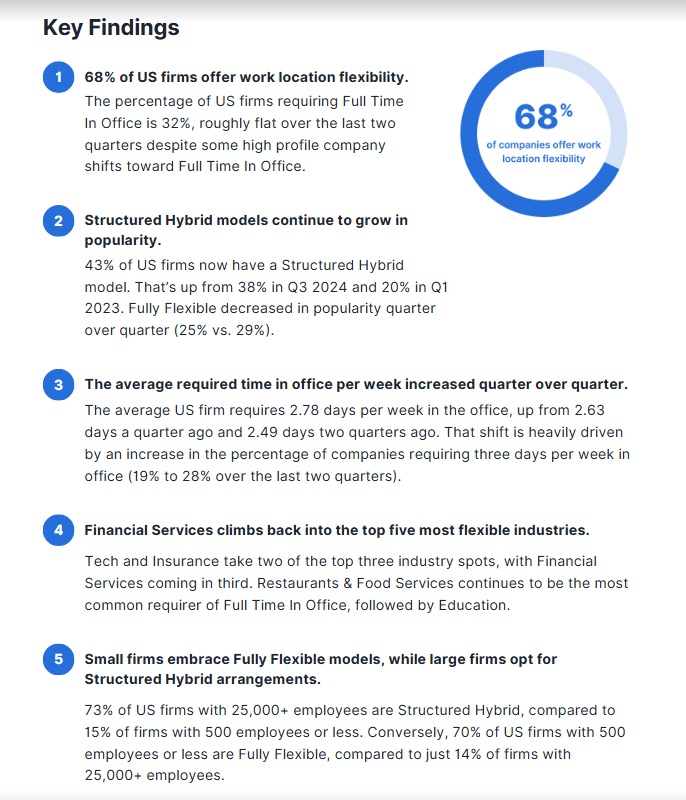Over the past few years, remote work has become an unavoidable reality for millions worldwide. Initially driven by the pandemic, it quickly turned into a global experiment that transformed how we think about work.
However, as the world returns to “normal,” many companies are reevaluating their policies and calling employees back to the office.
This shift raises a critical question: What happens if remote work ends? What will be the impacts on companies, employees, and organizational culture?
Companies Leading the Return to the Office
Several major companies have already taken clear steps toward bringing employees back to the office. Amazon, for instance, announced in early 2023 that its employees would need to spend at least three days a week in the office. CEO Andy Jassy argued that in-person work is essential to “strengthening culture and fostering collaboration.”
Another tech giant, Apple, has adopted a hybrid model, requiring employees to be in the office three days a week, with mandatory attendance on Tuesdays and Thursdays. This decision sparked dissatisfaction among some employees, who organized petitions against the change. Still, Apple’s leadership maintains that innovation depends on face-to-face interactions.
In the financial sector, Goldman Sachs has been even more rigorous. The bank communicated via an internal memo that all employees should return to the office full-time, asserting that in-person work is vital for maintaining the company’s competitiveness.

Challenges of Returning to the Office
These decisions, however, are not without criticism. For many employees, remote work brought benefits like better work-life balance, reduced commuting time, and, in some cases, even increased productivity.
Returning to the office presents clear challenges, including:
-
Employee resistance: Recent surveys show a significant number of workers prefer to continue working remotely. A McKinsey study revealed that 87% of employees with the option to work remotely have embraced it at least partially.
-
Mental health concerns: Remote work gave employees more control over their routines. For many, returning to the office could trigger anxiety and stress, particularly in environments perceived as toxic or demanding.
-
Logistical hurdles: Companies face costs and complexities in reconfiguring office spaces, renegotiating leases, and implementing incentives to encourage employees to return.
The Impact on Organizational Culture
The most common argument for returning to the office is the need to strengthen organizational culture. The idea is that in-person interaction fosters a sense of belonging and alignment with company values. But is this really true?
According to a Harvard Business School study, employees who work in person are more likely to connect with colleagues from other departments and build informal networks of collaboration. This can drive innovation, resolve problems faster, and create a more dynamic work environment.
However, it’s essential to remember that organizational culture doesn’t solely depend on physical proximity. Companies like Spotify, which adopted a remote-first model, are proving that strong cultures can thrive even with distributed teams. Spotify supports employees in choosing where and how they work, prioritizing individual well-being without compromising collaboration.
Strategies for a Balanced Return
For companies opting to bring employees back to the office, it’s crucial to adopt strategies that minimize negative impacts while reinforcing the positives:
-
Flexibility as a priority: Hybrid models, like those implemented by Amazon and Apple, allow employees to enjoy the best of both worlds. Setting fixed days for in-person work balances the need for interaction with the autonomy of remote work.
-
Spaces that inspire collaboration: Many companies are reimagining their office layouts to create environments that encourage creativity and connection. Shared desks, communal areas, and brainstorming spaces can make the office more appealing.
-
Focus on well-being: Returning to the office should come with initiatives to support mental health and work-life balance. Wellness programs, flexible schedules, and emotional support are essential steps.
-
Clear and transparent communication: Employees need to understand the reasons behind these decisions. Explaining how returning to the office contributes to the company’s mission and the employee experience can increase buy-in and reduce resistance.
What If Remote Work Ends Completely?
If remote work were to disappear entirely, the impacts would be profound and multifaceted:
-
For companies: Relying solely on in-person work could make it harder to attract and retain talent, especially among professionals who prioritize flexibility. Additionally, it could lead to increased fixed costs related to physical office spaces.
-
For employees: The lack of options might lead to dissatisfaction and disengagement, particularly among those who have experienced the benefits of remote work.
-
For organizational culture: A full return to the office might strengthen team connections but risks alienating those who feel that flexibility was removed without justification.
The Future of Organizational Culture
The end of remote work is not a magical solution to address organizational challenges. Companies choosing to bring employees back to the office must do so with intention, clarity, and empathy. Strengthening organizational culture doesn’t solely depend on physical presence but rather on strategies that connect employees to the company’s purpose and values.
Whatever model is adopted, the most important takeaway is that organizational culture reflects how people work together — whether in an office or remotely.
What truly matters is creating an environment where people feel valued, motivated, and connected, no matter where they are.

What if Monster Inc. hired us to take care of their wellbeing?
It might sound like fiction… But that’s exactly where the

The transformation of the job market: A critical analysis for corporate leadership and organizational well-being
The Future of Jobs Report 2025 by the World Economic

Transformational leadership as a pillar for organizational well-being: How engaged managers can redefine mental health in the workplace
Imagine arriving at work and truly feeling valued in an

The power of dialogue in a polarized workplace
When was the last time you witnessed or participated in

Money Isn’t Everything: Redefining Recognition and Appreciation at Work
Why do so many employees leave their companies even when

More Than Benefits: What Organizations Can Learn from Interdependent Communities
The Connection Dilemma in Corporate Environments In a corporate world